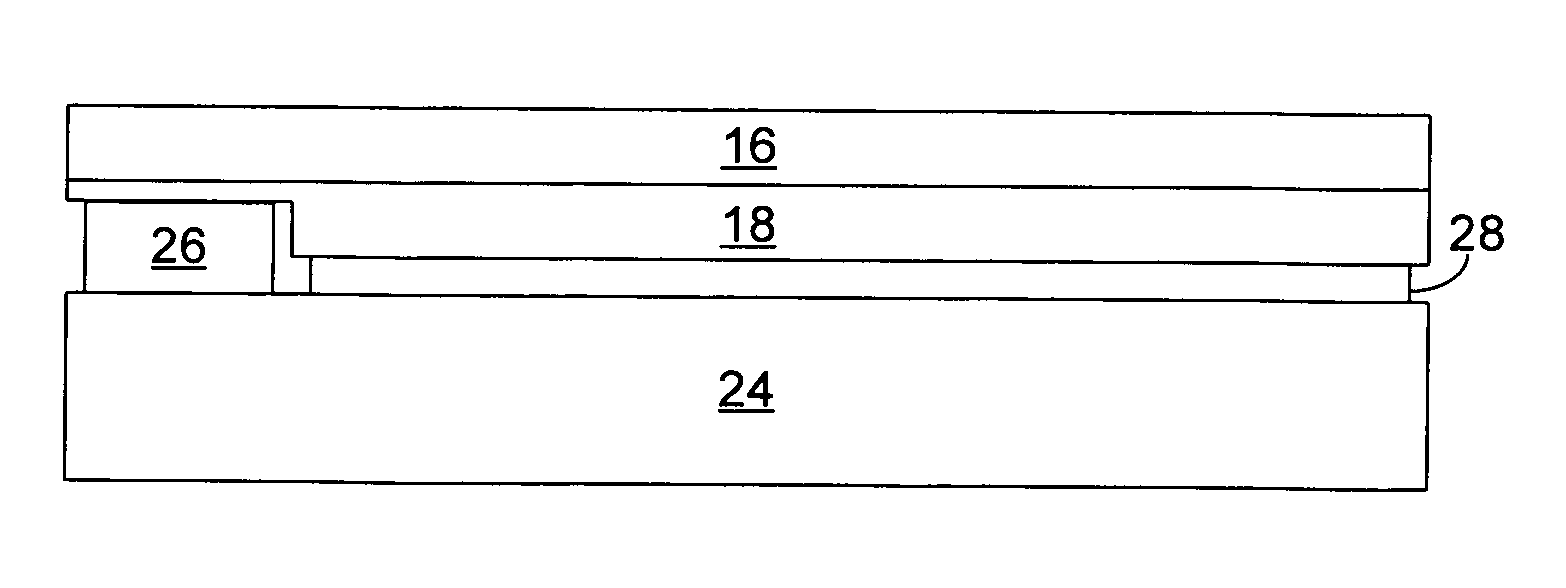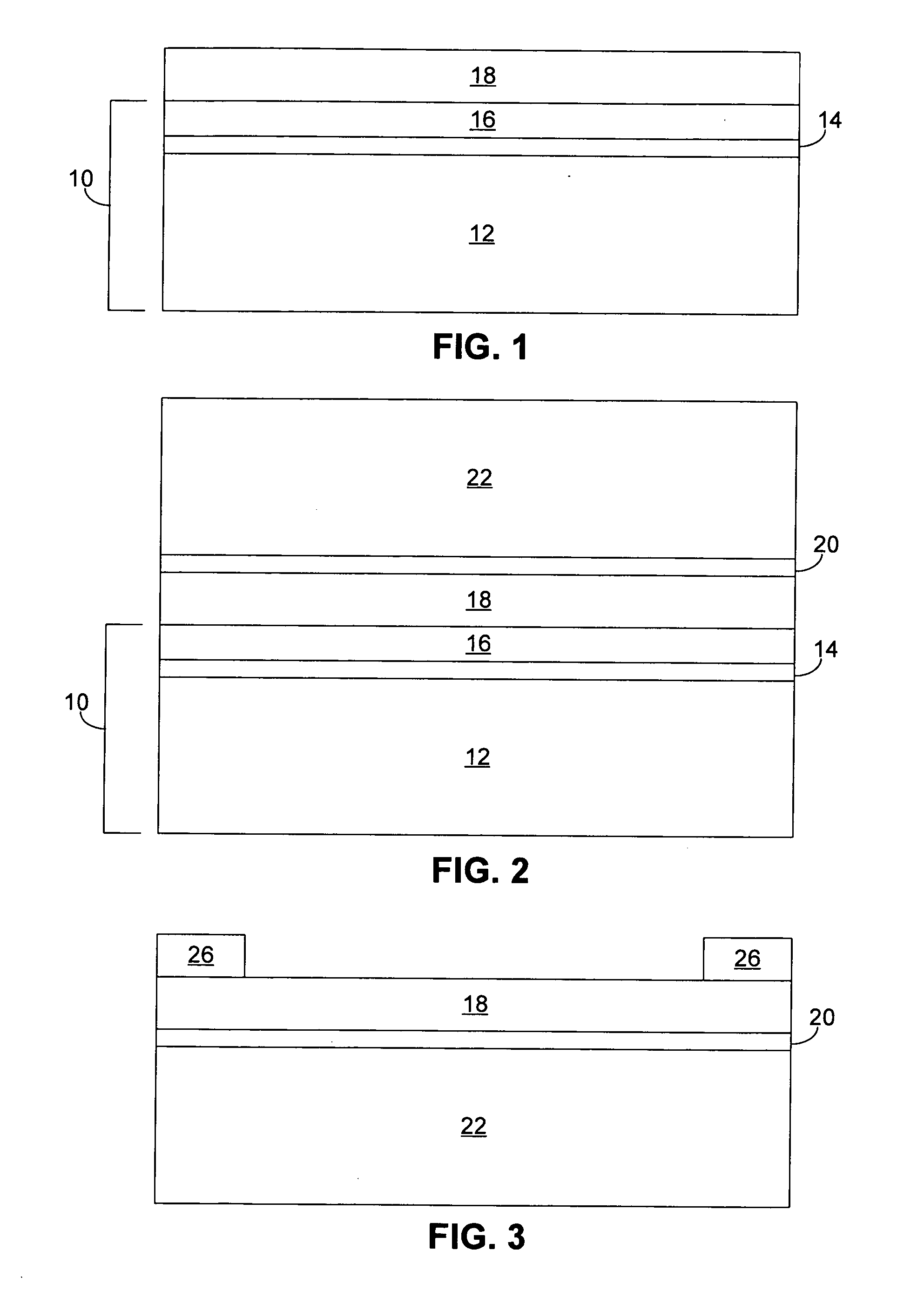Substrate for growing a III-V light emitting device
a technology of iii-v light emitting devices and substrates, which is applied in the direction of crystal growth process, polycrystalline material growth, electrolytic capacitors, etc., can solve the problems of poor performance and reliability, non-iii-nitride substrates are less than optimal, and the substrates are generally expensive and not widely available. to achieve the effect of reducing the strain in the semiconductor structur
- Summary
- Abstract
- Description
- Claims
- Application Information
AI Technical Summary
Benefits of technology
Problems solved by technology
Method used
Image
Examples
Embodiment Construction
[0019] In accordance with embodiments of the invention, a semiconductor light emitting device such as a III-nitride light emitting device is grown on a composite growth substrate 10, as illustrated in FIG. 1. Substrate 10 includes a host substrate 12, a seed layer 16, and a bonding layer 14 that bonds host 12 to seed 16. Each of the layers in substrate 10 are formed from materials that can withstand the processing conditions required to grow the semiconductor layers in the device. For example, in the case of a III-nitride device grown by MOCVD, each of the layers in substrate 10 must be able to tolerate an H2 ambient at temperatures in excess of 1000° C.; in the case of a III-nitride device grown by MBE, each of the layers in substrate 10 must be able to tolerate temperatures in excess of 600° C. in a vacuum.
[0020] Host substrate 12 provides mechanical support to substrate 10 and to the semiconductor device layers 18 grown over substrate 10. Host substrate 12 is generally between 3...
PUM
 Login to View More
Login to View More Abstract
Description
Claims
Application Information
 Login to View More
Login to View More - R&D
- Intellectual Property
- Life Sciences
- Materials
- Tech Scout
- Unparalleled Data Quality
- Higher Quality Content
- 60% Fewer Hallucinations
Browse by: Latest US Patents, China's latest patents, Technical Efficacy Thesaurus, Application Domain, Technology Topic, Popular Technical Reports.
© 2025 PatSnap. All rights reserved.Legal|Privacy policy|Modern Slavery Act Transparency Statement|Sitemap|About US| Contact US: help@patsnap.com



